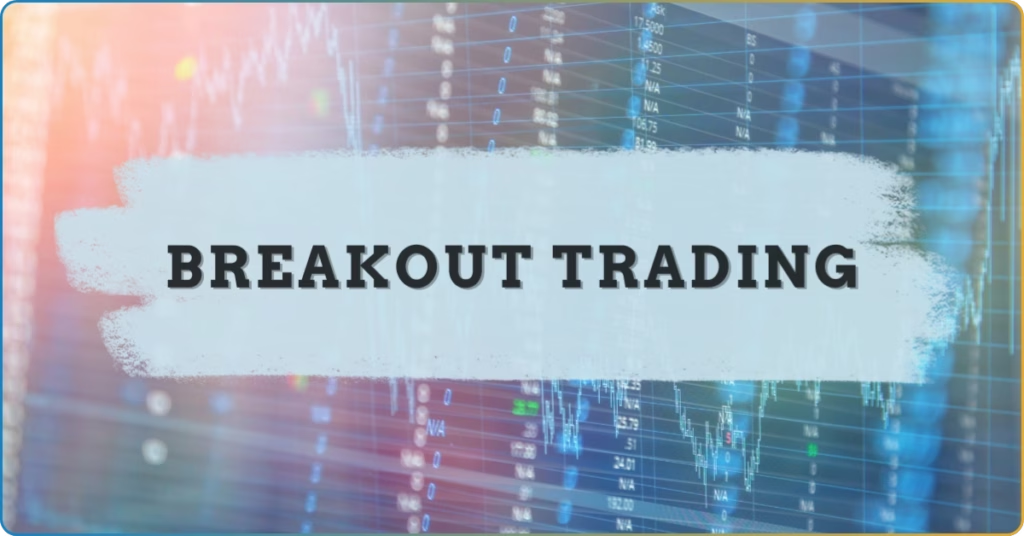Scalping generally refers to executing high-volume small trades and keeping them open for a few minutes to exploit the tiniest market movement.
This trading strategy follows the idea that small market movements are easier to catch than large ones. Executing a large number of winning small trades would then result in a large return.
But what guides scalpers from knowing when to execute a buy or sell position? They rely on technical indicators to spot profitable entry and exit points.
In this article, you’ll walk through the seven indicators that objectively inform you about the strength of the prevailing trend, a valuable insight that guides you in taking advantage of small market movements.
What is Scalping and How Does it Work?
Market volatility, 24/7 accessibility, liquidity, and the flexibility to profit from the market’s ups and downs.
With these features, the forex market undoubtedly wins the hearts of global investors- especially those who want to earn from the second-to-minute changes in the market.
To make this possible, such traders adapt scalping into their trading system.
At its core, the scalping strategy involves executing as many trades as possible and closing them within a few minutes.
The logic behind this strategy is that small price movements are easier to catch than large ones. Once the small trades gain, the accumulated small wins compound into a large gain.
This trading style is all about profitability of making large profits by exploiting the tiniest price movement.
Read more: Different Types of Trading Strategies and Styles [2024 Update]
Pros & Cons of Using Scalping Trading Strategy
Executing a large volume of forex transactions is considered the most beginner-friendly strategy for profiting in trading. Moreover, it offers the appeal of quick profits with reduced exposure to market risks.
However, traders are often blinded by these advantages, making them ignore the drawbacks of scalping.
Pros of Scalping
- Quick Trading Profits. Since scalpers religiously capitalize on small price movements, this trading strategy naturally aimed to run at profits as quickly as possible.
- Increased Profitability During the Volatile Market. Scalpers feed on short-term price movements of the financial markets. The bigger the fluctuation, the higher their potential of yielding big returns.
- Reduced Exposure to Market Risk. By holding positions for a short time, scalpers avoid sudden market conditions or events that could negatively impact their positions.
Cons of Scalping
- Constant Monitoring. Catching profitable small price movements is easier said than done. Scalpers have to invest time monitoring the price actions, and they tend to execute their trades manually instead of utilizing automated orders.
- Costly Transaction Fees. Scalpers run at higher transaction costs because they execute multiple trades instead of a single or couple of trades. Fees include spreads and commissions.
- Pressured Trading. Scalping is known to be an emotional or stress-induced strategy as it tries to ride the fast-paced nature of the forex market.
- Advanced Tool. This strategy requires real-time data and immediate execution to exploit short-term price movements effectively. Unfortunately, scalping indicators are typically sophisticated and programmed to adapt to very small time frames.
Top 7 Indicators Used for Scalping
Scalpers rely on short-term price movement to quickly generate profits from high-volume trades. Therefore, scalping should always occur in a trending market, not during market indecision.
In other words, your scalping profitability relies on the activeness of the market.
Read more: TradersUnited – Best Time for Forex Trading
Since scalping is extremely fast-paced, you should use technical indicators capable of quickly and objectively informing you about the direction the price will trade over a few seconds or minutes and the strength of the prevailing trend.
Here are seven (7) of the most used and regarded scalping indicators in forex trading.
1. Simple Moving Average (SMA)
The Simple Moving Average (SMA) is a basic yet effective indicator for scalping.
With SMA, you have a reference to whether the currency pair price is appreciating or depreciating. By considering the asset’s moving averages, analyzing SMA helps you understand the strength of the prevailing trend; if it’s running its course, it signals a potential market reversal.
Follow these three (3) simple steps to calculate the market’s average price within a particular period:
Step 1. Select the market range you want to analyze
Step 2. Get the sum of all the closing prices within the selected range
Step 3. Divide the sum by the total number of periods within the selected range.
2. Exponential Moving Average (EMA)
The Exponential Moving Average (EMA) functions similarly to SMA: both moving averages provide insights into the average price at which the market trades.
EMA is an improved approach to understanding the prevailing trend and its strength. Why?
Simple – it’s more sensitive to small prices as it puts more weight on the recent price action.
With its sensitivity to price movements, EMA is considered a more reliable scalping indicator than SMA.
Scalpers mostly prefer the 9-period and 20-period EMAs, which balance the fast-paced market movement and historical price points.
3. Moving Average Convergence Divergence (MACD)
Another predictive tool that scalpers use is the Moving Average Convergence/Divergence (MACD).
However, behind its predictive power is the requirement to be familiar with exponential moving averages. MACD indicator gauges the trend’s strength by measuring the distance between two EMAs from different periods.
- 1st Line – the MACD oscillator (12-period EMA minus the 26-period EMA)
- 2nd Line – the MACD signal line (9-period EMA)
- Histogram – the value of the 1st line minus the 2nd line.
MACD provides insights into the market’s buying and selling pressure. If the MACD oscillator trades above the signal line, the market will reverse in a bullish direction.
On the other hand, when the MACD line goes below the signal line, it indicates the intervention of sellers and the potential for a bearish trend reversal.
However, this indicator works best for scalpers when the two EMAs diverge. Diverging MACD brings the profitable volatility that traders need following this style.
4. Parabolic SAR (Stop and Reverse)
Developed by J.Welles Wilder Jr., the parabolic SAR indicator is another scalping indicator that helps traders spot trends and reversals. It is well-regarded by scalpers as it is responsive to recent price changes.
The parabolic SAR indicator appears as dots on your price chart. These dots are placed either below or above the prices.
- Dots above the price: The price follows an established uptrend. When the market trades above the dot, it signals a potential bearish reversal.
- Dots below the price: The market is currently depreciating. Once the price trades below the dot, a bullish reversal is likely.
To use this indicator for scalping, you must accurately interpret the above signals to take advantage of the small price fluctuation when the price direction reverses.
Remember to place your trailing stop order at the SAR value to prevent losses due to abrupt market movement. A move beyond these dots indicates a market reversal.
5. Relative Strength Index (RSI)
The Relative Strength Index (RSI) is another momentum indicator you can rely on to interpret the market’s overbought or oversold conditions. Through these market conditions, you can predict potential trend reversals and identify profitable entry and exit points.
The RSI measures the speed and change of price movements from 0 to 100.
An oscillator closer to 100 (70~100) signifies an overbought market. Meanwhile, when the RSI oscillates below 30, it indicates an oversold market condition.
- An overbought market makes the asset price too expensive. When this occurs, traders will short their positions, as the price will likely fall and return to its intrinsic value.
- An oversold market means that the asset is cheap for its price. Buyers can enter when the market becomes cheap, as the price will likely rise.
Pairing RSI with other indicators can help fine-tune scalping strategies.
6. Bollinger Bands
Technical analysts use the Bollinger bands indicator to gauge an asset’s price movement.
It tells you about the current movement and strength of the trend; if it signals a shift in trend momentum, be ready to take the opposite direction of the trend, as it will mostly reverse.
Bollinger Bands consist of a middle SMA and two standard deviation bands, one above and one below the SMA.
These bands help scalpers visualize volatility and price ranges to identify potential trend reversals.
When prices touch or move beyond the upper or lower bands, it may indicate overbought and oversold conditions. Remember, an oversold market signals a bullish reversal, while an overbought asset will reverse to an uptrend.
Scalpers use Bollinger Bands to identify breakout opportunities or range-bound trades.
7. Volume-Weighted Average Price (VWAP)
As its name suggests, the volume-weighted average price (VWAP) indicator calculates the average of the asset’s volume and price throughout the trading session.
Read more: TradersUnited – What Is a Forex Trading Session?
The VWAP value is calculated by following these two simple steps:
- Getting the sum of asset prices over a certain session, including the high, low, and closing prices.
- Divide the price sum by three to get the price average. Three is the total number of considered variables.
- Multiply the price average by the trading period volume to get the PV (Price, Volume)
- Divide the PV by the total number of volumes for that specified period to get the VWAP.
While less known than the ones above, the VWAP indicator provides valuable insights into the market dynamics. It analyzes two important trading variables: the price trend (historical price) and security value (market volume).
Scalpers find this indicator indispensable, especially when used with other scalping indicators.
Forex Tip: Use Multi-Indicators for Better Analysis

Remember, you should never treat a single indicator as the ultimate teller of market trends.
Considering the dynamic and fast-paced nature of the forex market, treating an indicator as self-confirming is detrimental, as no single indicator is programmed to adapt to every market condition.
Moreover, implementing multi-indicator analysis would help you better analyze and interpret the prevailing trend and predict its future movement.
Learn more about technical analysis on TradeGeek: TradersUnited – Technical Analysis 101.
Frequently Asked Questions
Is Scalping Profitable?
When done correctly, executing a high volume of buys and sells over a short period is profitable. This is because it allows you to profit quickly from the fluctuating market.
However, this trading strategy can only yield high profits if you know the best scalping practices, including indicators.
What Is Considered a Favorable Win Percentage (%W) for scalping?
Generally, the favorable win percentage from all your scalped small trades is 80%.
If you’ve executed 100 trades, at least 80 positions should yield returns.
If %W is 60%, it’s considered a loss because of the cumulated trading fees incurred across the 100 trades.
Why Do Some Brokers Prohibit Scalping?
Brokers never prohibit scalping. This idea simply emerges as executing dozens to hundreds of small trades could hypothetically strain the broker’s system.
However, brokers’ systems are becoming more advanced and sophisticated now.
Contrary to this question, brokers would like their traders to scalp the market as it will increase their revenues from transaction and commission fees.
Final Thoughts: Should You Select the Best Indicator for Scalping?
The more indicators for scalping you use, the more informed your analysis is.
So, when considering indicators to use, the goal is never to find the best one; it should be about selecting a set of indicators that complement each other.
Aside from the seven I’ve mentioned above, countless indicators can help you find profitable entry and exit points to exploit short-term market movement. Join a community of online traders, connect with experienced traders, and get their insights on what indicators work best for scalping.

















